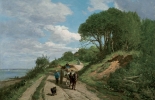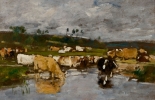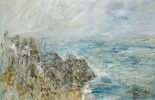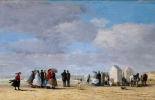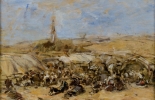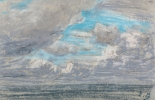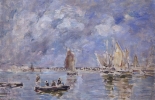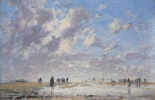Eugène Boudin, l’atelier de la lumière
from April 16 to September 26, 2016
"I already want to be in front of the sea, wielding my paintbrush: it is astounding how much I have progressed and what a thirst I have for light!"
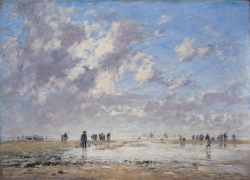
Eugène BOUDIN (1824-1898), Low Tide at Étaples, 1886, oil on canvas, 79 x 109 cm. © Musée des Beaux-Arts - Mairie de Bordeaux / L. Gauthier, F. Deval
In Rotterdam, Venice and Bordeaux, on the Channel coast or in Rembrandt-like Breton interiors, he set out to capture the specific nature of the constantly changing light that was never the same twice.


